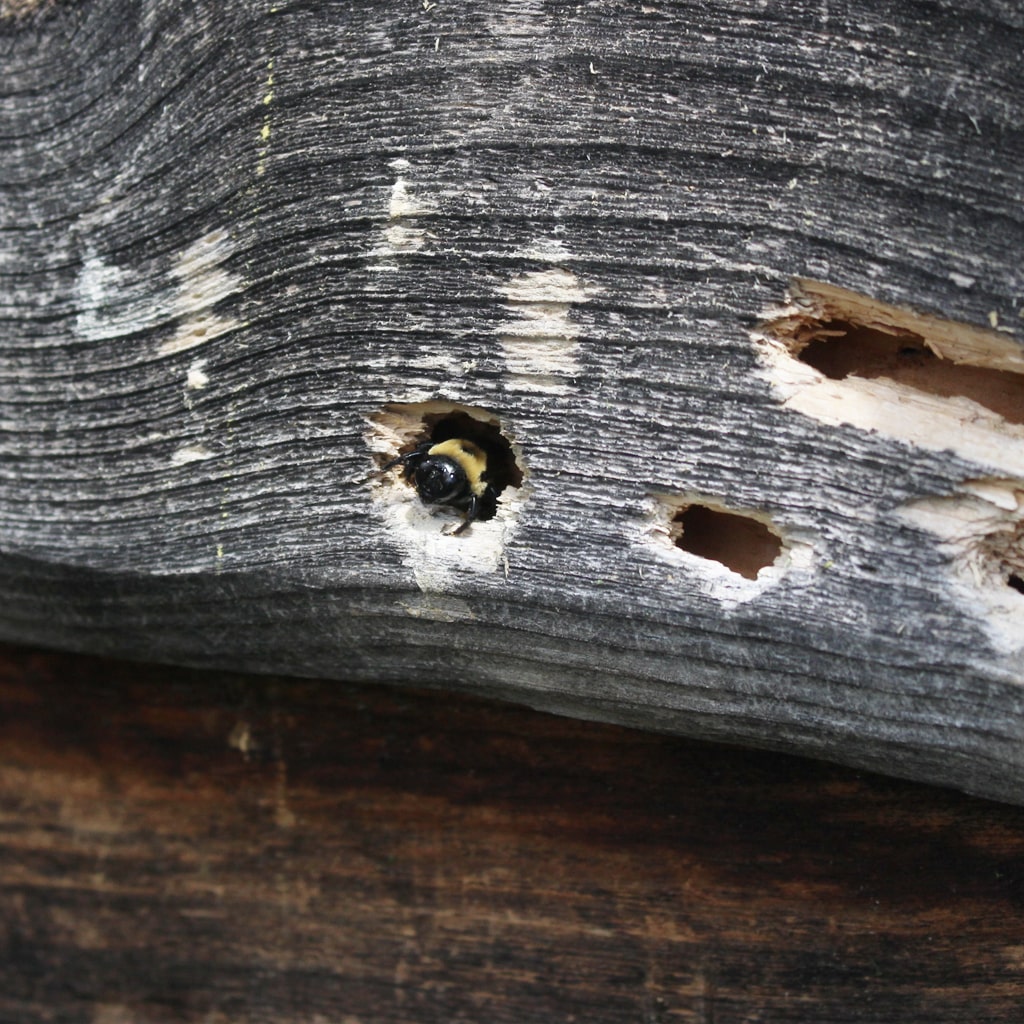Stinging Pests
Stinging Pests
Warm weather is to blame for these intruding pests. These insects can be found in your home, building nests in attics, nearby gutters, and other similar areas. Again, it is important to seal gaps to keep these pests from migrating indoors. The following are the most common stinging pests in the area:

Bees
Identifying Bees: Bees are found just about anywhere on this globe with over 200,000 bee species. The largest reported insect is 3.9 cm long and the shorter ones are 2mm. Bees are usually black or brown with red, yellow, or blue stripes.
Homeowners are exposed to three types of bees, which are the honey bees, carpenter bees, and bumble bees. These bees usually become active in the spring with the warm weather and flowering of plants. They remain active throughout summer into the fall seasons. However, during the winter months, their activity decreases to the point where they are not seen unless it's warm.
Honey Bees
Identifying the honey bee: Honey bees are about 15mm in length and a light brown color. They are oval-shaped with golden-yellow colors and brown bands. Honey bees are segmented, containing a stinger, antenna, legs, and three segments of thorax and six visible segments in the abdomen. Honey bees thrive in the holes of trees and rock crevices. They are social and live in colonies that contain over thousands of members. Three types of adult honey bees reside in one colony: the queen, male drones, and infertile female workers.
Bumblebee
Bumble bees are large and hairy insects that are black and yellow and sometimes orange or red in some species. Their sizes vary, but adult bees may be over an inch long. Male and female bumble bees differ in that males do not have a stinger and have a rounded abdomen.
Carpenter Bee
Carpenter bees are another popular species of bees. These insects vary in color from black, greenish back, metallic blue, or purple blue. Men and female carpenter bees are distinguished by the yellow hairs on the legs, thorax, and abdomen, but the hairs are not as vibrant or numerous as bumble bees. Carpenter bee infestations are easily identified by the presence of their entrance holes in wood, the presence of sawdust on the ground where the hole is drilled, the presence of yellowish combinations of pollen and bee excrement near the entrance of the hole.
Hornets
Identifying Hornets: There are 20 identified species of hornets in the world. The only species of true hornet in the U.S is the European hornet (Vespa crabro). This hornet is yellow and brown, measuring about 1 ½ inches long. A similar insect is the bald-faced hornet, even though it is not considered a true hornet. The bald-faced hornet is about 1 inch long and is black and white. Both the bald-faced and European hornets are similar to wasps, but their distinguished characteristic is the wasps' small size. Bald-faced hornets build nests in circular shapes, about the size of a basketball and built in trees. Whereas European hornets make their nests in areas aboveground that are secluded like porches, inside wall voids, and preferably hollow trees.
Dangers posed by hornets: Bald-faced Hornets can be extremely aggressive if they or their nests are disturbed, and they will sting repeatedly. Their nests usually contain 100-400 individuals posing a severe threat if disturbed. A hornet sting can trigger allergic reactions if made by an individual hornet, but a group of hornet stings can result in fatality.
Yellow Jackets
Identifying Yellow Jackets: Characterized by their name, yellow jackets are yellow and black insects. These insects, in length, are about 12mm-16mm (0.47-0.67in). These insects are often mistaken for bees, although their bodies lack the same amount of hair and a rounded abdomen. These social wasps live in colonies that may contain thousands of insects at a time.
Yellow jackets can be found under porches or steps, railroad ties, or the base of trees. The queen can use a wall void of a building as a nesting place. Some even build nests in low-hanging branches or corners of buildings.
Dangers of yellow jackets: The sting of a yellow jacket is painful, and they are capable of delivering multiple stings. Yellow jacket stings may induce severe allergic reactions in some individuals.
Wasps
Identifying Wasps: Identifying a wasp varies depending on the species. However, most wasps range in colors from black to metallic greens and blues, and sizes vary from microscopic to a few centimeters in length. Wasps can be predatory, and others can be parasitic. Predatory wasps consume other insects or other animals that they feel their larvae (offspring). Whereas, parasitic wasps lay their eggs in the bodies of living creatures like caterpillars or spiders. Wasps find themselves in our home through openings. Therefore, effectively sealing openings that may lead into a home is critical for wasp prevention.
Signs of infestations and dangers: If a wasp nest is built inside, the result may become a serious one that involved stinging. Their sting could cause an allergic reaction in some people. Also, wasps that nest inside may damage the wallboard or ceiling. Another major problem associated with inside nests is the possibility of scavenger pests that infest abandoned inside wasp nests.
List of Wasp Species:
- Eastern Cicada Killer Wasp
- European Paper Wasp
- Great Black Wasp
- Ground Wasps
- Mud Dauber Wasps
- Paper Wasps
- Red Wasps
- Sawflies
- Spider Wasp
- Wood Wasps
Pest Guide
We specialize in Rodent, Insect Proofing, and Removal.
Get service within 2 hours of your initial call.
About us
Founded in 1985, City Express Exterminating has been providing professional pest control services to both commercial and residential clients for over 30 years. Not only are we renowned for our thorough job and attention to detail, but we are sufficiently ahead of the competition with the utilization of the newest technology. Along with professional and discreet service, our staff consists of professionally licensed service technicians. Our technicians are highly trained and qualified, and they excel at handling any pest problem pertaining to commercial and residential properties. Instead of simply getting the job done, we want to get it done the right way—the safe way—which is why we work hard to stay knowledgeable and to educate you on the products we use and why we use them.
All Technicians are State certified.
We are proud member of the NYSPA & A Quality Pro rated company.











































